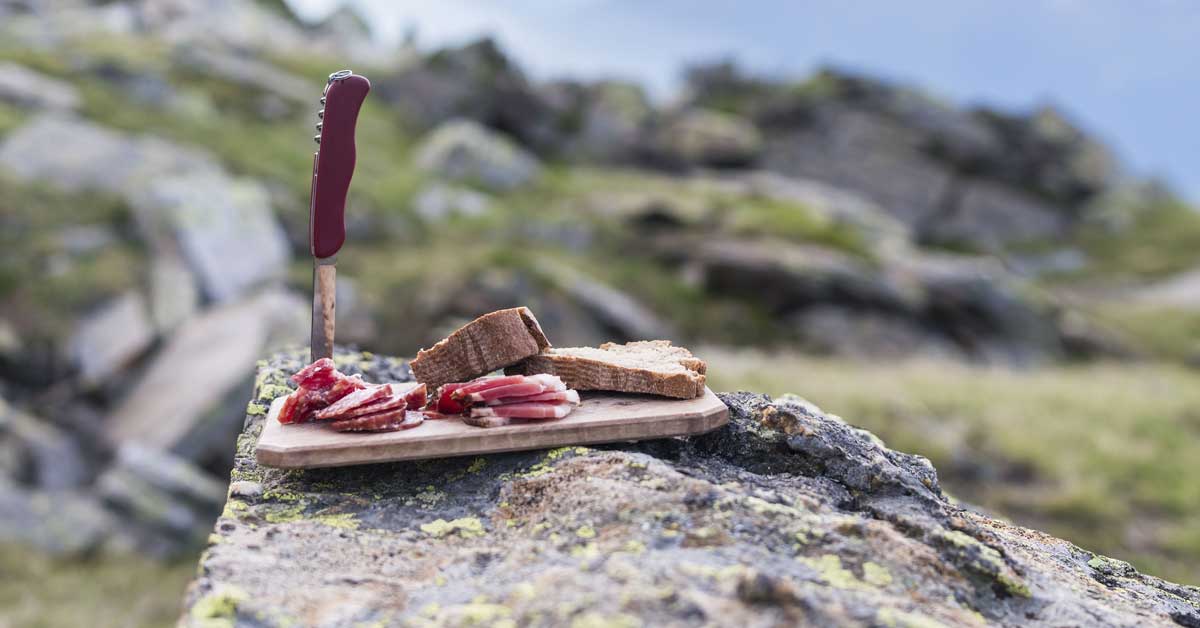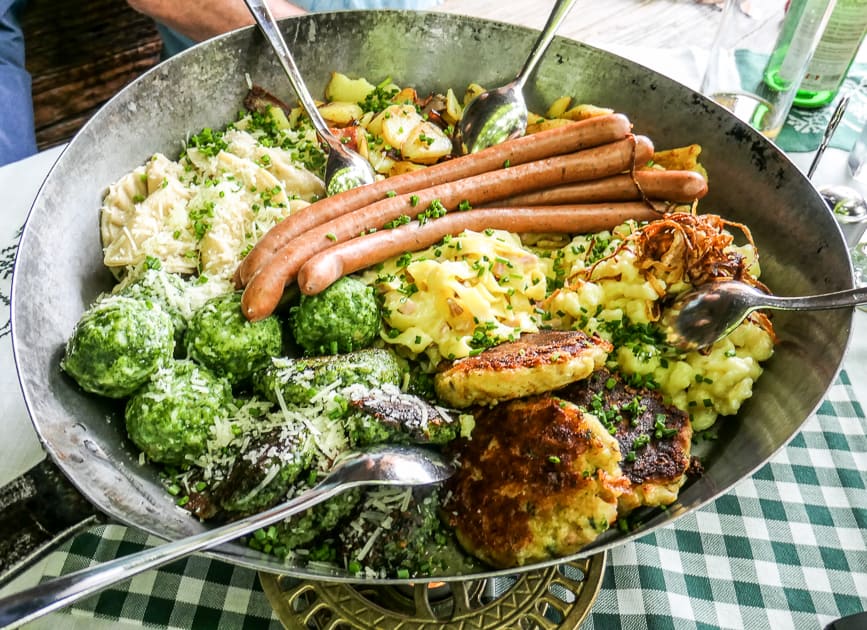Mountain meals, a symphony of flavors and traditions, invitations us on a culinary journey via rugged landscapes and vibrant cultures. From hearty stews to fragrant herbs, mountain delicacies showcases the resilience and ingenuity of communities nestled amidst towering peaks.
This exploration will delve into the dietary treasures, cooking methods, and cultural significance of mountain meals. We’ll uncover its position in sustaining communities, selling well being, and enhancing tourism. Alongside the way in which, we’ll savor the tales and flavors that make mountain meals a culinary journey like no different.
Varieties of Mountain Meals
Mountainous areas supply a singular culinary expertise, formed by the challenges and sources of the excessive altitude. Conventional mountain delicacies displays the cultural heritage of native communities and showcases the flavors and components present in these rugged environments.
Mountain meals typically emphasizes practicality and nourishment, with dishes designed to supply sustenance and heat in harsh situations. Elements are sometimes domestically sourced and tailored to the restricted rising seasons and availability of sources.
Conventional Dishes and Elements
- Dairy Merchandise:Mountain areas are identified for his or her dairy farming, and milk, cheese, and butter are widespread components. Cheeses like Gruyère and Emmental originate from the Swiss Alps, whereas onerous cheeses like Parmigiano-Reggiano are produced within the Italian Dolomites.
- Meat and Sport:Looking and livestock farming have been a part of mountain life for hundreds of years. Wild sport, reminiscent of venison and chamois, is usually utilized in conventional dishes. Cured meats like prosciutto and speck are additionally in style.
- Greens and Herbs:Greens like potatoes, cabbage, and turnips are hardy and well-suited to the mountain local weather. Herbs like thyme, rosemary, and sage add taste to dishes.
- Cereals and Grains:Barley, rye, and buckwheat are widespread grains grown in mountain areas. They’re utilized in breads, soups, and stews.
- Honey:Mountain bees produce distinctive and flavorful honey, which is usually used as a sweetener and ingredient in desserts.
Dietary Worth of Mountain Meals
Mountain meals, sourced from high-altitude areas, provides a singular dietary profile that sustains native communities and gives important vitamins for explorers. Its dietary worth stems from the cruel environmental situations that form its development and composition.
Important Nutritional vitamins and Minerals
Mountain meals is a wealthy supply of nutritional vitamins and minerals, together with:
- Vitamin C:Very important for immune system operate and antioxidant safety.
- Vitamin A:Helps imaginative and prescient, pores and skin well being, and immune response.
- Potassium:Regulates fluid stability, blood strain, and muscle operate.
- Magnesium:Important for power manufacturing, nerve operate, and muscle leisure.
- Iron:Prevents anemia and helps oxygen transport.
Position in Sustaining Native Communities
Mountain meals performs an important position in sustaining native communities by offering a supply of nourishment and revenue. Indigenous communities have tailored their diets to include these nutrient-rich meals, making certain their survival in difficult environments.
Cooking Strategies for Mountain Meals
In mountainous areas, conventional cooking strategies have tailored to the distinctive challenges of excessive altitudes. These strategies typically contain sluggish cooking over open fires or in earthen ovens, preserving the flavors of native components whereas accommodating the restricted sources out there.
At excessive altitudes, the decrease atmospheric strain impacts the boiling level of water, making it tough to prepare dinner meals completely. Conventional cooking strategies, reminiscent of stewing, braising, and roasting, enable for longer cooking instances at decrease temperatures, making certain that meals is cooked evenly and safely.
Open-Hearth Cooking
- Cooking over an open hearth is a standard methodology in mountainous areas, offering a supply of warmth and a smoky taste to meals.
- Meals are usually grilled, roasted, or smoked over the fireplace, utilizing easy instruments like skewers or forged iron cookware.
- This methodology requires cautious consideration to warmth management and managing the fireplace to keep away from burning or undercooking the meals.
Earthen Oven Cooking
- Earthen ovens are conventional cooking constructions made from clay or stone, which retain warmth and create a constant cooking atmosphere.
- Meals are positioned contained in the oven and coated with sizzling coals or embers, permitting them to prepare dinner slowly and evenly.
- This methodology is especially appropriate for baking bread, roasting meats, and cooking stews or casseroles.
Fashionable Cooking Methods
Whereas conventional cooking strategies stay in style in mountainous areas, trendy methods have additionally been adopted to accommodate the wants of hikers and climbers.
- Transportable stoves and light-weight cookware enable for handy cooking on the go.
- Freeze-dried meals and dehydrated meals present fast and straightforward choices for these with restricted time or sources.
- Campfire cooking utilizing foil packets or Dutch ovens provides a flexible and environment friendly technique to put together meals over an open hearth.
Cultural Significance of Mountain Meals

Mountain meals holds immense cultural significance inside mountain communities, embodying their traditions, customs, and heritage. It serves as a culinary illustration of their distinctive lifestyle, formed by the difficult but bountiful atmosphere by which they reside.
Neighborhood Gatherings and Celebrations
Mountain meals performs a central position in group gatherings and celebrations. From conventional festivals to reap feasts, it serves as an emblem of unity and shared experiences. These events supply alternatives for communities to return collectively, share tales, and go down culinary traditions from era to era.
Cultural Identification and Heritage
The flavors and components of mountain meals are deeply intertwined with the cultural identification and heritage of those communities. Conventional dishes and cooking methods are handed down via generations, preserving the distinctive culinary heritage of every area. Mountain meals serves as a tangible connection to the previous, serving to to take care of a way of continuity and cultural preservation.
Financial and Social Significance, Mountain meals
In lots of mountain communities, meals manufacturing will not be solely a way of sustenance but in addition an essential financial exercise. Native farmers and artisans depend on the sale of mountain meals merchandise to help their livelihoods. Moreover, food-related tourism, reminiscent of culinary excursions and workshops, has emerged as a major supply of revenue for these communities.
Sustainability of Mountain Meals

Mountain meals manufacturing faces distinctive environmental challenges as a result of fragile nature of mountain ecosystems. Local weather change, deforestation, and overgrazing threaten the sustainability of mountain meals programs. Initiatives reminiscent of agroforestry, sustainable grazing practices, and community-led conservation efforts are essential for preserving and defending mountain meals sources.
Environmental Challenges
Mountain ecosystems are extremely weak to local weather change, with rising temperatures and altered precipitation patterns affecting crop yields and livestock manufacturing. Deforestation for agriculture and logging reduces soil stability, resulting in erosion and lack of biodiversity. Overgrazing by livestock can degrade mountain pastures, decreasing their productiveness and contributing to soil erosion.
Sustainability Initiatives
Agroforestry practices, which mix bushes with agricultural crops or livestock, may help defend mountain ecosystems. Bushes present shade, scale back erosion, and enhance soil fertility. Sustainable grazing practices, reminiscent of rotational grazing and managed stocking charges, can stop overgrazing and keep the well being of mountain pastures.
Neighborhood-led conservation efforts, involving native farmers and indigenous communities, are important for safeguarding conventional farming practices and preserving mountain meals programs.
Tourism and Mountain Meals
Mountain meals performs an important position in tourism, providing guests a singular and genuine culinary expertise that enhances their total journey. Native meals experiences can create lasting reminiscences and foster a deeper appreciation for the area’s tradition and traditions.
Culinary Excursions and Eating places
Many tourism locations supply culinary excursions particularly designed to showcase mountain meals. These excursions present guests with an immersive expertise, permitting them to study native components, cooking methods, and the cultural significance of mountain delicacies. Guests can work together with native farmers, cooks, and meals artisans, gaining insights into the area’s culinary heritage.
Along with culinary excursions, there are quite a few eating places in mountain locations specializing in mountain meals. These eating places supply a variety of dishes, from conventional recipes handed down via generations to revolutionary creations that mix native components with trendy culinary methods.
By eating at these eating places, guests can savor the flavors of the mountains and expertise the area’s culinary traditions firsthand.
Mountain Meals and Well being

Mountain meals provides a singular array of dietary advantages resulting from its excessive altitude cultivation and publicity to various weather conditions. These components contribute to the event of particular vitamins, antioxidants, and bioactive compounds that may positively influence human well being.
Therapeutic Properties of Mountain Herbs and Elements
Sure mountain herbs and components possess therapeutic properties which have been acknowledged for hundreds of years in conventional medication. For instance, Rhodiola rosea, an adaptogenic herb present in high-altitude areas, is believed to reinforce bodily and psychological efficiency, scale back stress, and enhance cognitive operate.
Gentiana lutea, a bitter herb utilized in conventional Alpine delicacies, is thought for its digestive and liver-protective properties.
Contribution to a Wholesome Weight loss program
Mountain meals can contribute to a nutritious diet in a number of methods. It’s usually wealthy in fiber, nutritional vitamins, and minerals, that are important for total well-being. The excessive altitude cultivation of mountain crops promotes the buildup of antioxidants, reminiscent of flavonoids and carotenoids, which defend in opposition to mobile harm and scale back the chance of persistent illnesses.
Moreover, mountain meals typically comprises distinctive compounds which will have particular health-promoting results, reminiscent of antimicrobial or anti-inflammatory properties.
Question Decision: Mountain Meals
What are some distinctive components present in mountain meals?
Mountain meals typically incorporates native components reminiscent of wild berries, mushrooms, sport meat, and herbs that thrive in high-altitude environments.
How does cooking at excessive altitudes have an effect on meals preparation?
Excessive altitudes can influence cooking instances, boiling factors, and the rising of dough resulting from diminished atmospheric strain.
What are some conventional cooking strategies utilized in mountain areas?
Conventional cooking strategies embrace grilling over open fires, stewing in forged iron pots, and preserving meals via smoking and drying.
How does mountain meals contribute to the well being of native communities?
Mountain meals is usually wealthy in important nutritional vitamins, minerals, and antioxidants, offering sustenance and supporting the well-being of mountain communities.
